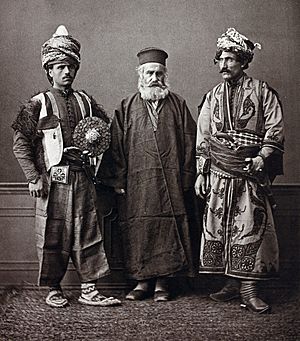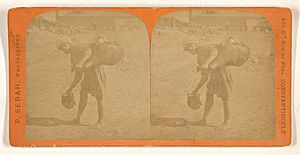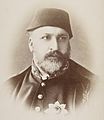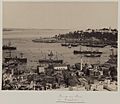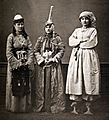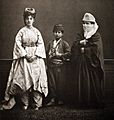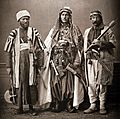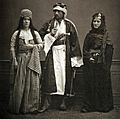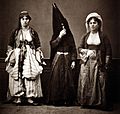Pascal Sébah facts for kids
Pascal Sébah (born 1823, died 1886) was a famous photographer. He lived and worked in Constantinople (which is now called Istanbul) and Cairo. He took many pictures of places like Egypt, Turkey, and Greece. These photos were very popular with tourists who wanted souvenirs.
Life and Photography Work
Pascal Sébah was born in Constantinople. At that time, Constantinople was the capital city of the Ottoman Empire. His father was from Assyria and his mother was from Armenia.
He first worked with a French photographer named Henri Bechard. Pascal Sébah won awards at an exhibition in Paris. After this, he decided to open his own photo studio in Constantinople in 1857.
Sébah's studio was called El Chark, which means "The Orient." It was located in a busy part of the city. Many tourists, embassies, and hotels were nearby.
Pascal Sébah mostly took photos for tourists. In the mid-1800s, many people traveled to Egypt. They wanted photos to take home as souvenirs. Sébah was one of the first photographers in Constantinople and Cairo to meet this demand.
Other early photographers included Félix Bonfils, Gustave Le Gray, Henri and Emile Bechard, and the Zangaki brothers. By 1873, Sébah was very successful. He opened a second studio in Cairo. That same year, he showed his work at a big exhibition in Vienna, Austria.
Sébah also worked closely with a Turkish painter named Osman Hamdi Bey. Sébah took photos to help the artist prepare his paintings. He experimented with how light and shadows looked in his pictures.
Hamdi Bey chose Sébah to take photos for his book. The book was about the popular clothes worn by Turkish people and other groups. It was called Les Costumes Populaires de la Turquie en 1873. It was published in 1873.
After Pascal Sébah passed away on June 25, 1886, his photo studio kept going. His brother, Cosmi, managed it. In 1888, Pollicarpe Joiallier became a partner. The company then changed its name to Sebah & Joaillier.
Pascal's son, Jean Pascal Sébah, also joined in 1888. He later ran the studio with other photographers. The company became known for its "Orientalist" photos. These photos showed scenes and people from the Middle East. In 1889, they were even chosen as the official photographers for the Prussian Court. Sébah's studio stayed open until 1973.
Pascal Sébah was a Syrian Catholic. He was buried in the Latin cemetery in Ferikoy. His son, Jean Pascal Sébah, is also buried there.
Gallery of Photos by Sébah
-
A portrait of Sultan Abdul Aziz by Pascal Sébah.
-
Part of a wide photo of the Topkapı Palace, around 1860–80.
See also
- List of Orientalist artists
- Orientalism


